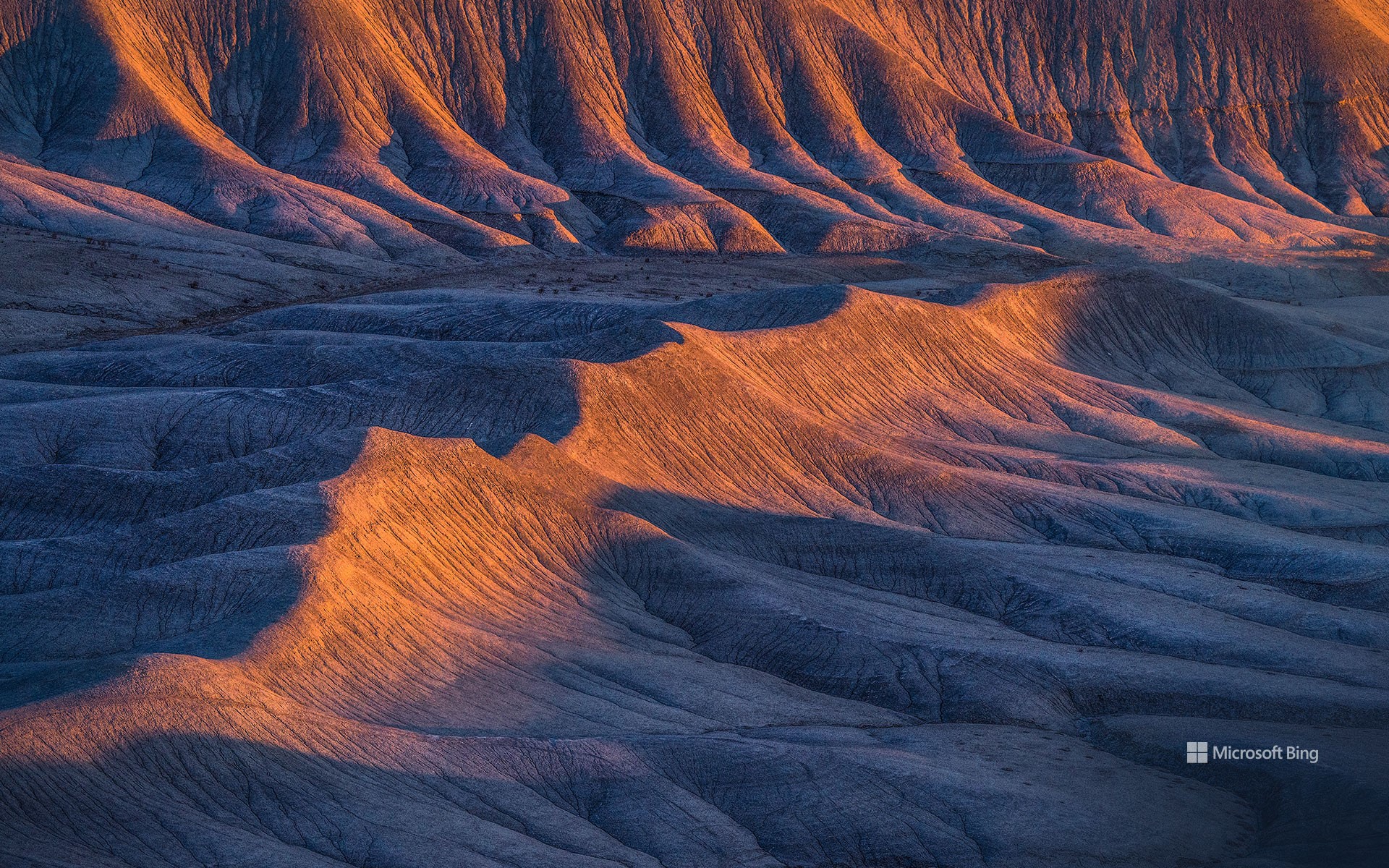凯恩维尔附近荒地的砂岩地层, 犹他州, 美国 Sandstone formations in the badlands near Caineville, Utah (© Chris Moore/TANDEM Stills + Motion)

凯恩维尔附近荒地的砂岩地层, 犹他州, 美国 Sandstone formations in the badlands near Caineville, Utah (© Chris Moore/TANDEM Stills + Motion)
时间的波浪 Waves of time
凯恩维尔附近荒地的砂岩地层, 犹他州, 美国
蜿蜒起伏的砂岩脊绵延于犹他州凯恩维尔荒地,宛如大自然在石头上绘制的笔触。这些地貌由细粒沉积物构成,最初沉积在古代河流三角洲和内陆海洋中,随后逐渐硬化为岩石。随着时间的推移,侵蚀作用穿透了这些地层,露出流动般的波纹状图案。沉积岩层记录着气候变迁和古老地貌的演变。今日图片中,这片荒凉的土地看似毫无生机,但在早春时节,降雨会让大地铺满紫色和黄色的小花。一天的不同时刻,光影不断变化,展现出不同的角度与风貌,为摄影师和游客提供了丰富的观赏体验。尽管这片崎岖不平的地形大部分仍然保持原始状态,但部分区域地势较为平缓,允许游客在无需剧烈攀爬的情况下轻松探索。
荒地广布于除南极洲以外的所有大陆。早期探险者在穿越这些艰难地形时遭遇重重困难,因此赋予它们“荒地”之名。古生物学家经常能在这里发现史前生物的化石遗骸。尽管环境极端,这些土地依然孕育着丰富的生命,包括沙漠植物、蜥蜴和鸟类。
Sandstone formations in the badlands near Caineville, Utah
Wavy sandstone ridges stretch across the Caineville Badlands in Utah, resembling nature's brushstrokes on stone. These formations are made of fine-grained sediment that settled in ancient river deltas and inland seas and later hardened into stone. Over time, erosion carved through the layers, exposing flowing, ripple-like patterns. The sedimentary layers tell a story of shifting climates and ancient landscapes. The barren land may appear lifeless, but during early spring, rainfall causes the terrain to be blanketed with tiny purple and yellow flowers. While much of the terrain remains rugged, some areas offer easy access, allowing visitors to explore without strenuous hiking.
Badlands exist on every continent except Antarctica. Early explorers named them after struggling to navigate harsh terrains. Fossil hunters frequently uncover remnants of prehistoric creatures in the eroded hills. Despite the extreme conditions, badlands support a wide range of life, including desert plants, lizards, and birds.
评论已关闭